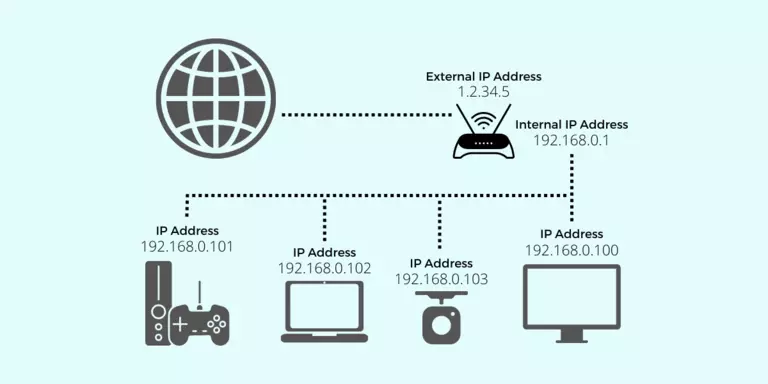An IP address is a number assigned to a device on a network. It is usually represented as four sets of numbers separated by a dot, such as 10.0.0.1 or other similar numbers.
Each number can range from 0 to 255, with 0 and 255 sometimes having special meanings.
On any network, every device must have a unique IP address. The entire internet counts as one network. All of the devices plugged into your router also count as one network, and it is considered a different network than the internet. Therefore it is possible to have a device on your network that has the same IP address as a device on someone else's network. It is not possible to have two devices on the internet with the same IP address.
IP stands for internet protocol. Currently, most of the devices on the internet are communicating using IPv4, which is described above. Over the next ten years, the internet is transitioning to IPv6. However, for most users currently, IPv4 matters the most.
Technical Facts about an IP Address
- An IP address is a 32-bit binary number that is divided into four sections by periods
- Each individual set of numbers in an IP address is called an octet
- There are four octets in an IP address and each octet is 8 bits
- An octet can range from 0 to 255 in value. (255 is the largest number that you can represent with 8 bits)
Internal vs External IP Address
If you are using a router then you have both an external and internal IP address. A router takes the external IP address from your ISP and uses it for all communication on the internet. It then creates a new network inside your home using special IP addresses that do not work on the internet. These IP addresses are called internal IP addresses. It is impossible to connect to an internal IP address from the internet. While this creates a nice layer of safety protecting your home network from the internet, it also breaks the fundamental concept of how networks work.
A port forward is a setting in your router that fixes this disconnect between external and internal IP addresses.
This is why when you set up a port forward you use the internal IP address as the target, and why you connect to the external IP address from the outside.

Your external IP address is issued to you by your ISP (Internet Service Provider). Because an IP address acts as an identification number, no two devices on the internet can have the same external IP address. Your external IP address is the IP address that is used to contact your device from the outside world.
Everything connected on your side of your router is in your local network and is designated a unique internal IP address. In most cases, internal IP addresses are issued dynamically by your router, but you may set a static IP address for devices on your network. Check out our guides for detailed instructions about how to set up a static IP address.
Home networks tend to have IP addresses in one of the following ranges:
- 192.168.0.x
- 192.168.1.x
- 10.0.0.x where x can range from 1 to 254
Static vs Dynamic IP Address
When you set up a network you have to assign an IP address to every device. You can do this by physically going to each device and configuring it to the correct settings. There is nothing wrong with this approach, but it is tedious, error-prone, and difficult to maintain. For instance, if you accidentally assign the same IP address to two devices then neither of them will function correctly and it can be hard to troubleshoot.
To fix this issue, DHCP was invented. DHCP stands for Dynamic Host Configuration Protocol, and it is the way that your router assigns an IP address to every device on your network. When a device first turns on and connects to the network, it sends out a special DHCP discovery packet (that only your router responds to) assigning that device its very own unique IP address.
It's up to the router to remember which IP addresses it has assigned and which ones are still available. Older routers were very bad about remembering which device had which IP address, causing most devices to get a different IP address every time they were powered on. This caused problems with port forwards because the destination address for the port forward was a constantly moving target.
The list of available IP addresses is referred to as a pool.
It is important to note, that if you begin to assign static IP addresses to devices you need to make sure that the IP addresses you are assigning are not in your router's DHCP pool. If you assign a device an IP address in the pool and the router later assigns a different device the same IP address you have an IP address conflict.
Dynamic IP addresses are IP addresses that are vended by a router. Dynamic IP addresses are not fixed and are subject to change. Dynamic IP addresses are a handy network function but they can cause problems when trying to do more advanced networking procedures like port forwarding. If the IP address that you are forwarding a port to changes, then your port forward no longer works.
Static IP addresses will never change. When using Static IP addresses you lose a small amount of plug and play functionality, but you gain reliability. We have a complete set of guides to show you how to set up a static IP address. We even offer free software that will set up a static IP address for you.
Please note that for almost all purposes regarding port forwarding you will only need to set up a static internal IP address.








